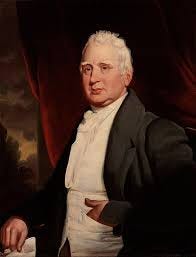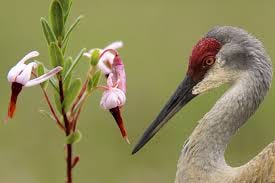London was brought to a standstill last week by a traffic gridlock caused by tractors from across the UK. Farmers rumbled into the capital to protest the government’s new inheritance tax on farms. To pay it, many will have to sell up the homes and land which have provided livelihoods that go back several generations. Buyers are unlikely to be other farmers, but rather developers or second-home owners. The result will be fewer supplies of fresh British produce, meat, fowl, dairy and eggs coming into supermarkets already under pressure from Brexit legislation and, as the report last week from Defra, the Department for Environment, Food and Rural Affairs, found, from climate change.
Had this taken place in the 18th century, one of the farmers’ champions might have been William Cobbett, journalist, pamphleteer, political reformer and farmer, author of Rural Rides, a record of the distressed state of English farming. Published in 1830, it’s still in print. Back in England after a period of self-imposed political exile in the US, Cobbett, too, vehemently objected to the proposed agricultural policies of the government of the day.
While living in the States, Cobbett discovered the cranberry. He declared it, “the finest fruit for tarts that ever grew.”
Named, some say, for the shape of the flower which is said to resemble the head of a crane, cranberries do at least share with cranes the love of a good bog.
The Native Americans of what is now New England called them sassamensesh or ibimi, and ate them with maple sugar. They used them as a cure for dysentery and as a poultice for wounds and tumours. Today, cranberry juice is often the first informal port-of-call in the treatment of urinary tract infections.
You may believe cranberries to be inherently American, but they also grow plentifully in the boggy lands of England’s north and in Scotland, although like the American versions of so much else, US cranberries (Vaccinium macrocarpon) are far larger.
Native British cranberries, Vaccinium oxycoccus, are known locally by many names, from ‘crones’ or ‘cranes’ to bounce berry, marsh-wort, moss-berry, fen-wort, and fenberry. Originally grown in the wild in what would otherwise be wasteland, peasants used them to make tarts they brought to market to sell.
British cranberries have never been good enough to turn into the global market that the American berry has created. It's in the bogs of Massachusetts, New Jersey, and in Wisconsin between the Great Lakes, in Washington state, in Oregon, and between Quebec and Montreal and in British Columbia that cranberries are grown, canned, dried, preserved, frozen, and juiced for sales expected to amount this year to $2.32 billion.
Gathering used to involve wading into the waters to pick them by hand. But around 200 years English colonists arrived to discover cranberries in their new homeland, cultivation to increase the quantity of berries growing in the wild began. Today, the night before harvest, the bogs are flooded with up to 18 inches high of water. Harvesting machines with spinning reels called ‘egg beaters’ whip up the water to detach the berries from their branches. The air that cranberries contain allows them to float across the surface in a glowing scarlet carpet.
Then the berries are raked into inlets in the bogs to be siphoned up and pumped into trucks for cleaning and sorting, ready for your Cosmopolitan cocktail or breakfast juice.
The cranberries you buy fresh to make your sauce have been ‘dry’ harvested before the bogs have been flooded.
Cranberries have thick skins that allowed the colonists to keep them long into the winter, but which means you should only sweeten your cranberries once they have cooked as sugar will toughen those skins.
Cranberries are an integral part of Thanksgiving and Christmas, but despite Cobbett’s enthusiasm for them as a dessert, only as a sauce. Yet they make plenty of wonderful meal endings - a baked pudding with a crispy meringue-like top, a streusel cake, a Danish kringle, a winter equivalent of the multi-berry Summer Pudding, and a tea bread. As well as this tart, probably not the one to have been made by English peasants heading to market.
125g/4oz flour
125g/4oz ground almonds
125g/4oz butter
2-3 tablespoons single/table cream
1 egg, beaten
You know how to make a pastry with the ingredients above, rest then roll it out to line a tin 23-25cm/9-10ins. If you want to keep the trimmings to create a lattice once you’ve filled the tart, all the better.
250g/8oz medium fat or curd cheese
375ml/12fl oz cranberry sauce (made in the usual way - make double for the turkey and this)
3 tablespoons sugar
Preheat the oven 190C/375F.
Mix the cheese with half the sauce and add sugar to taste. Spread over the pastry. Add the remain sauce over the top. Decorate with the pastry strips. Brush them with the beaten egg to glaze, and bake 35 minutes until the pastry is gold then serve with thick cream.









Slight correction. The commercially grown cranberry that's native to central areas of Canada and the US is Vaccinium macrocarpon. The berry that commonly grows in Europe is Vaccinium oxycoccus.
Love your newsletter Julia. A great read and education. :) Merci!